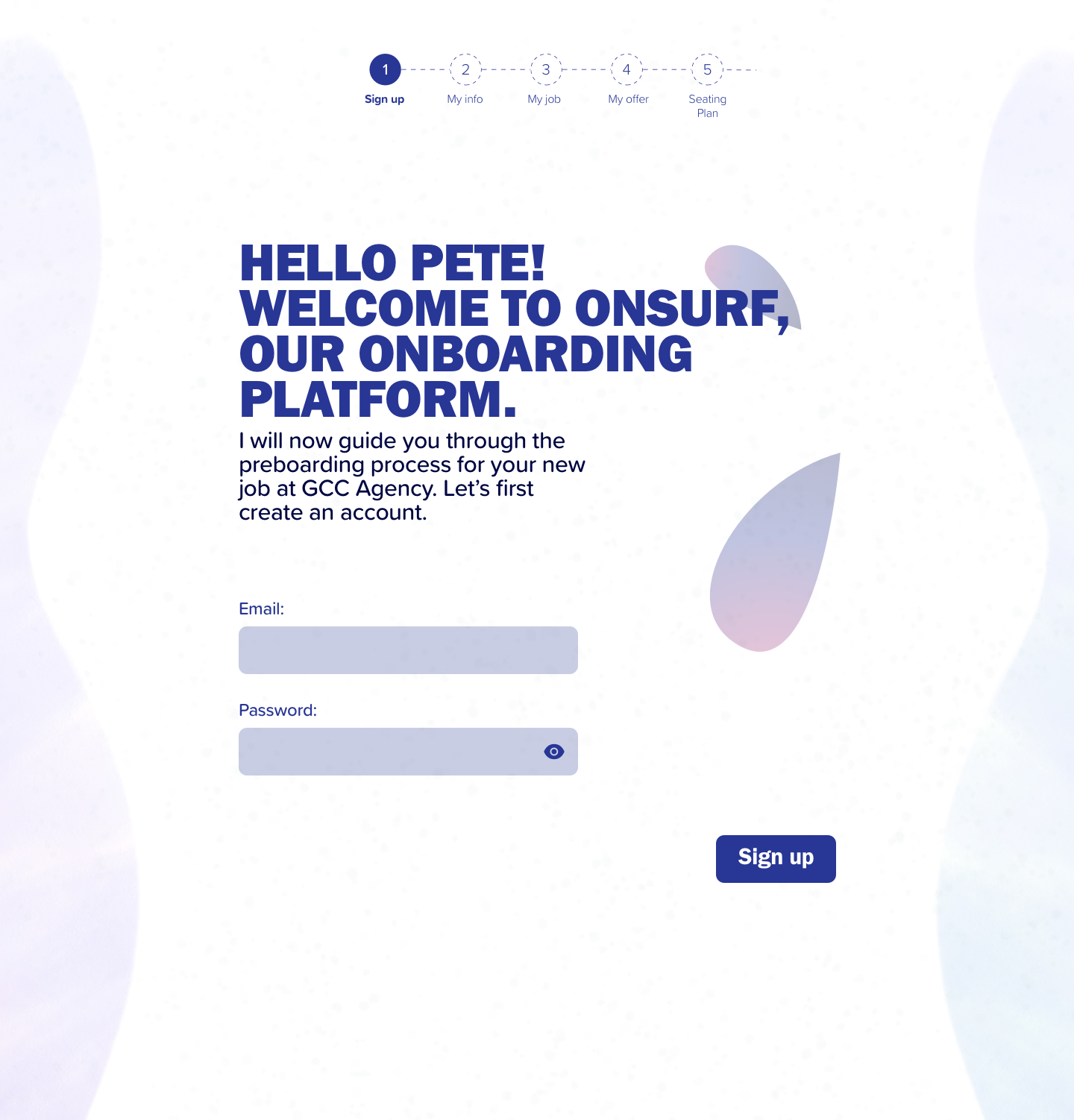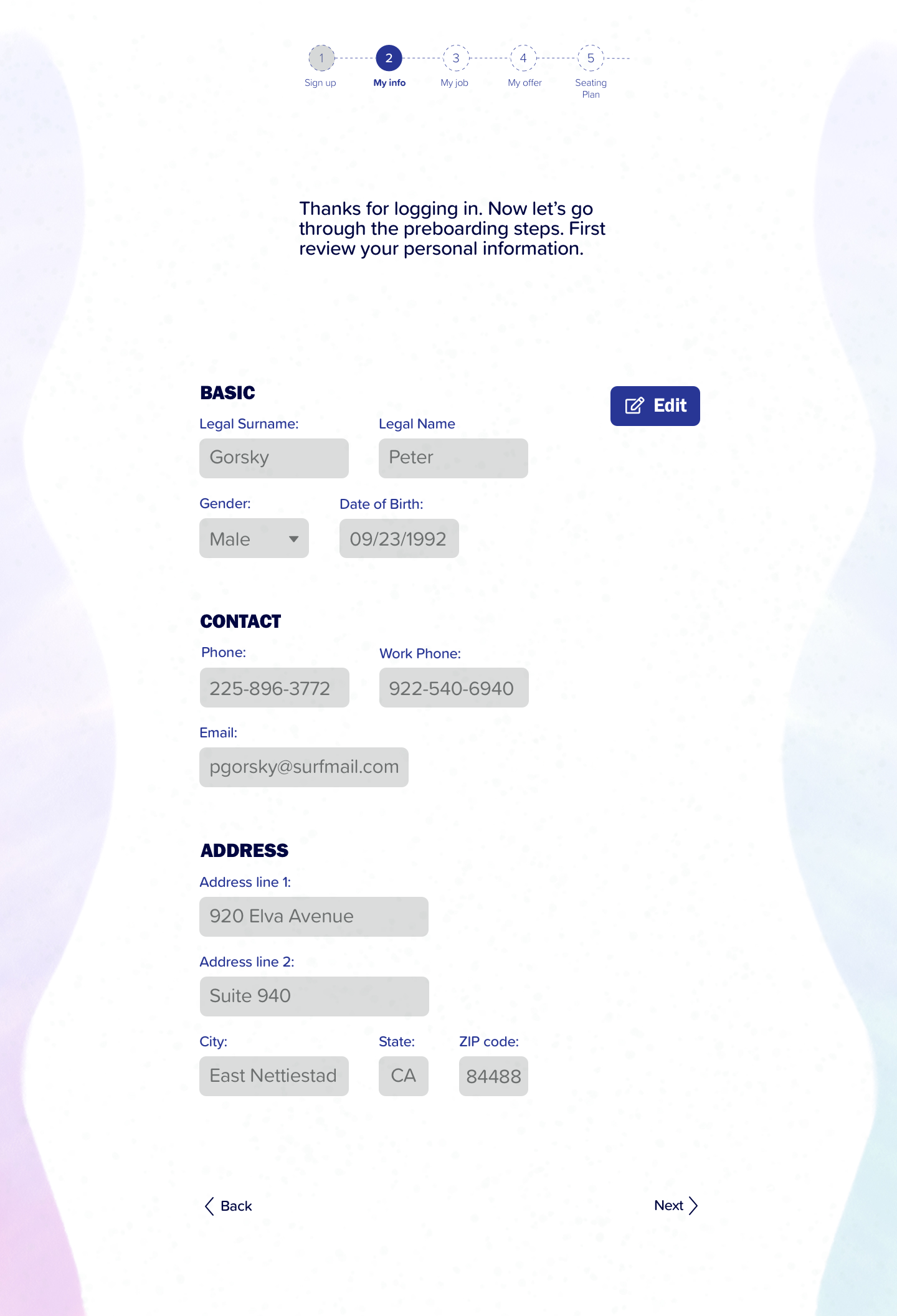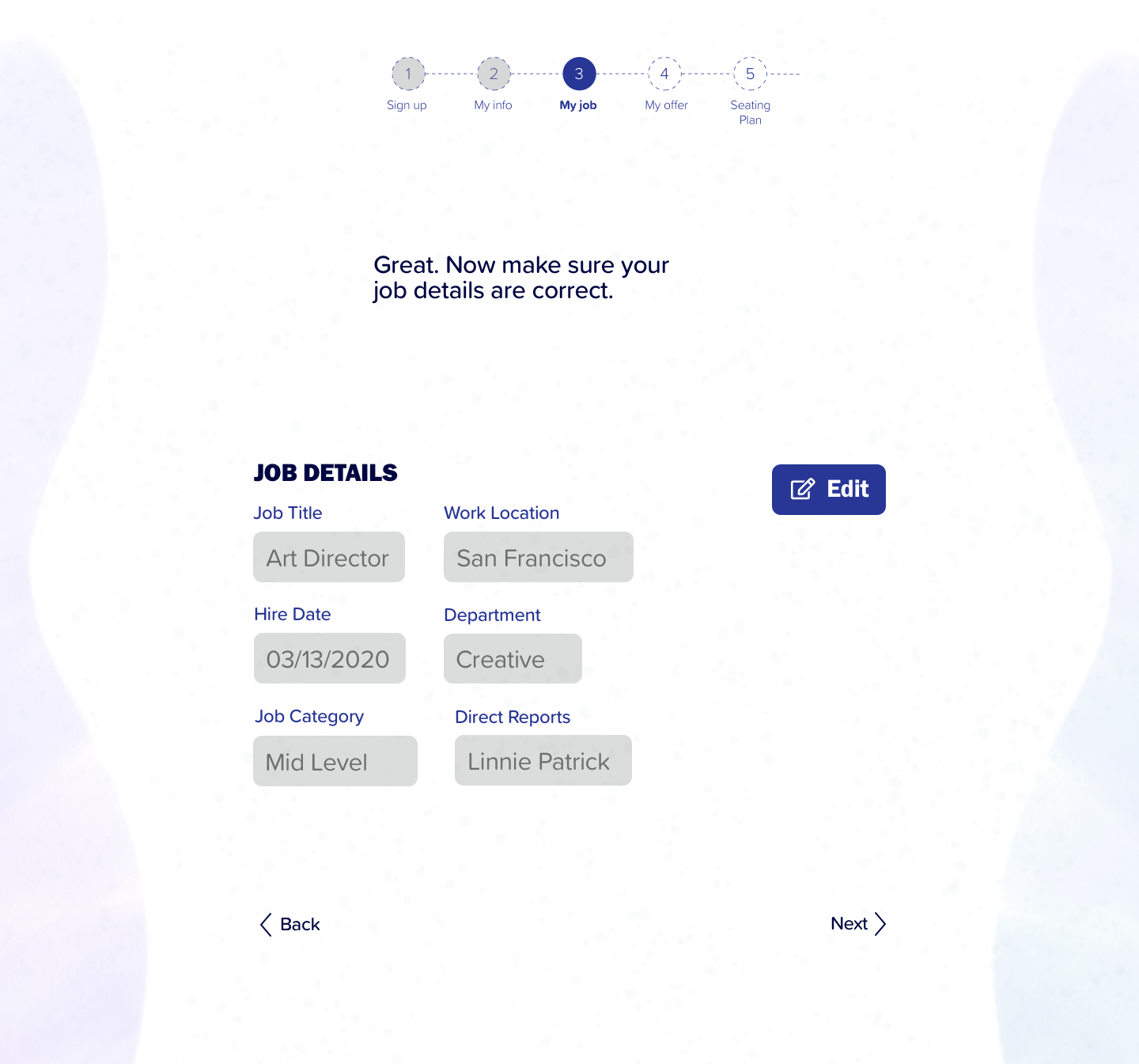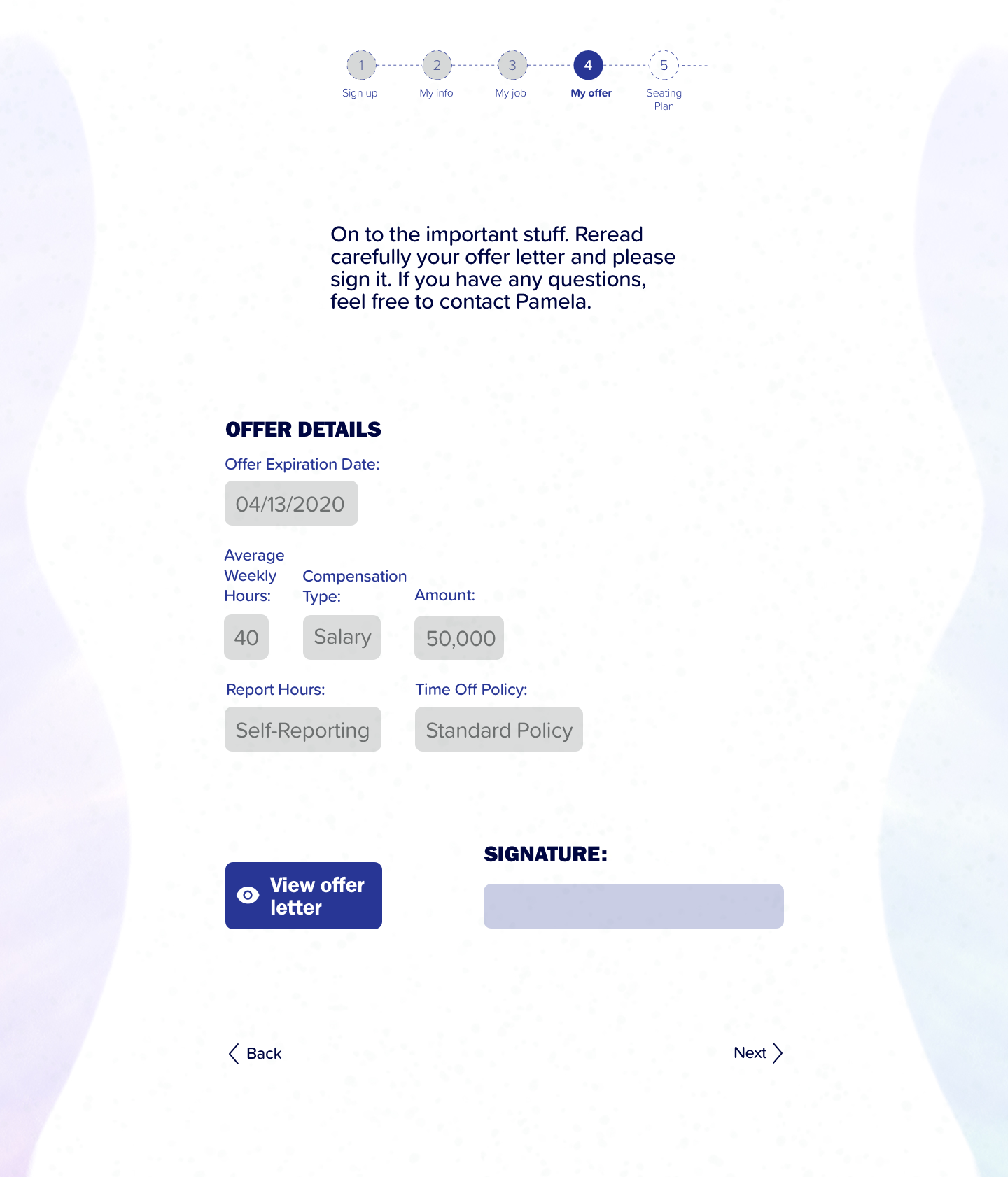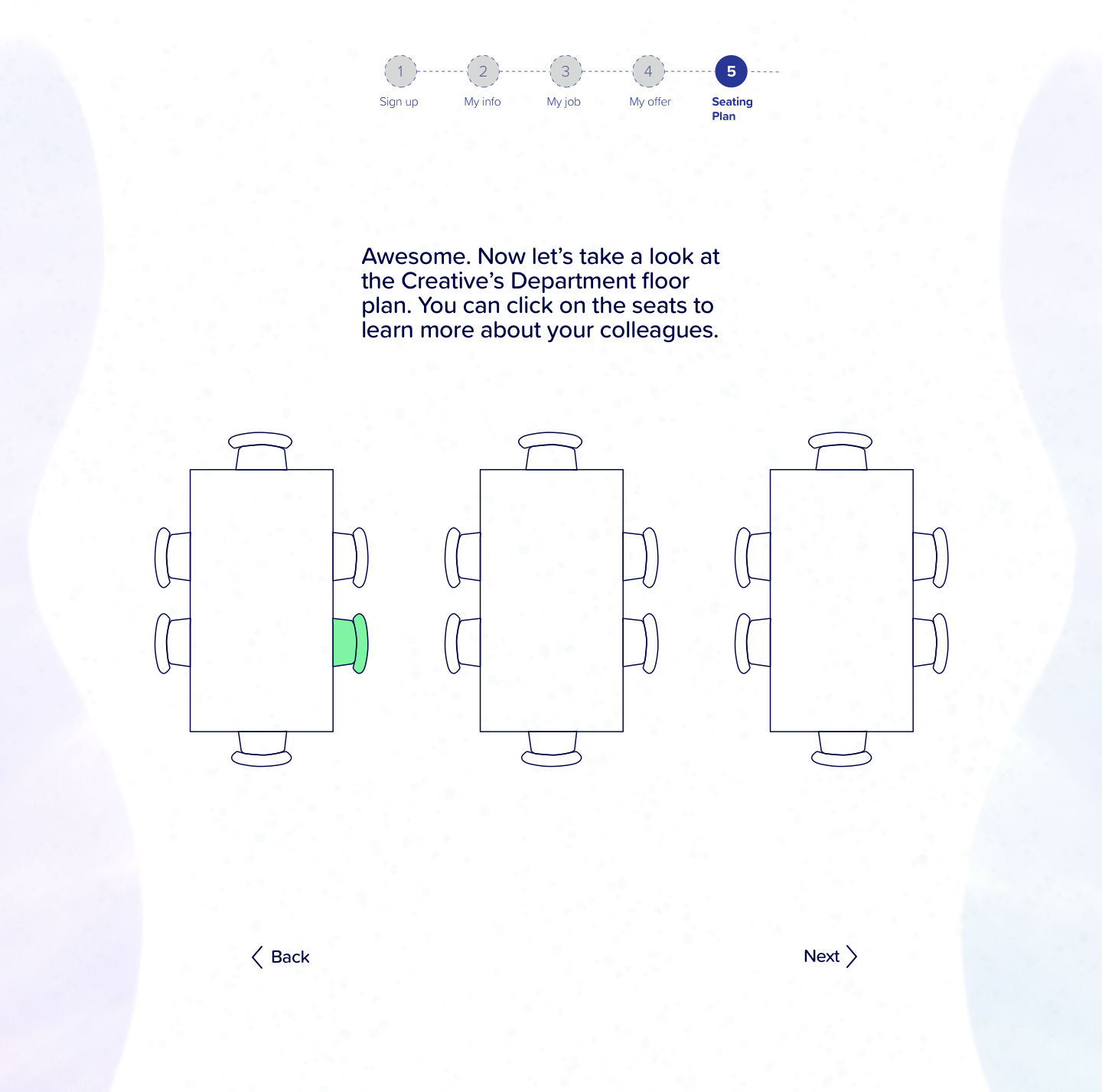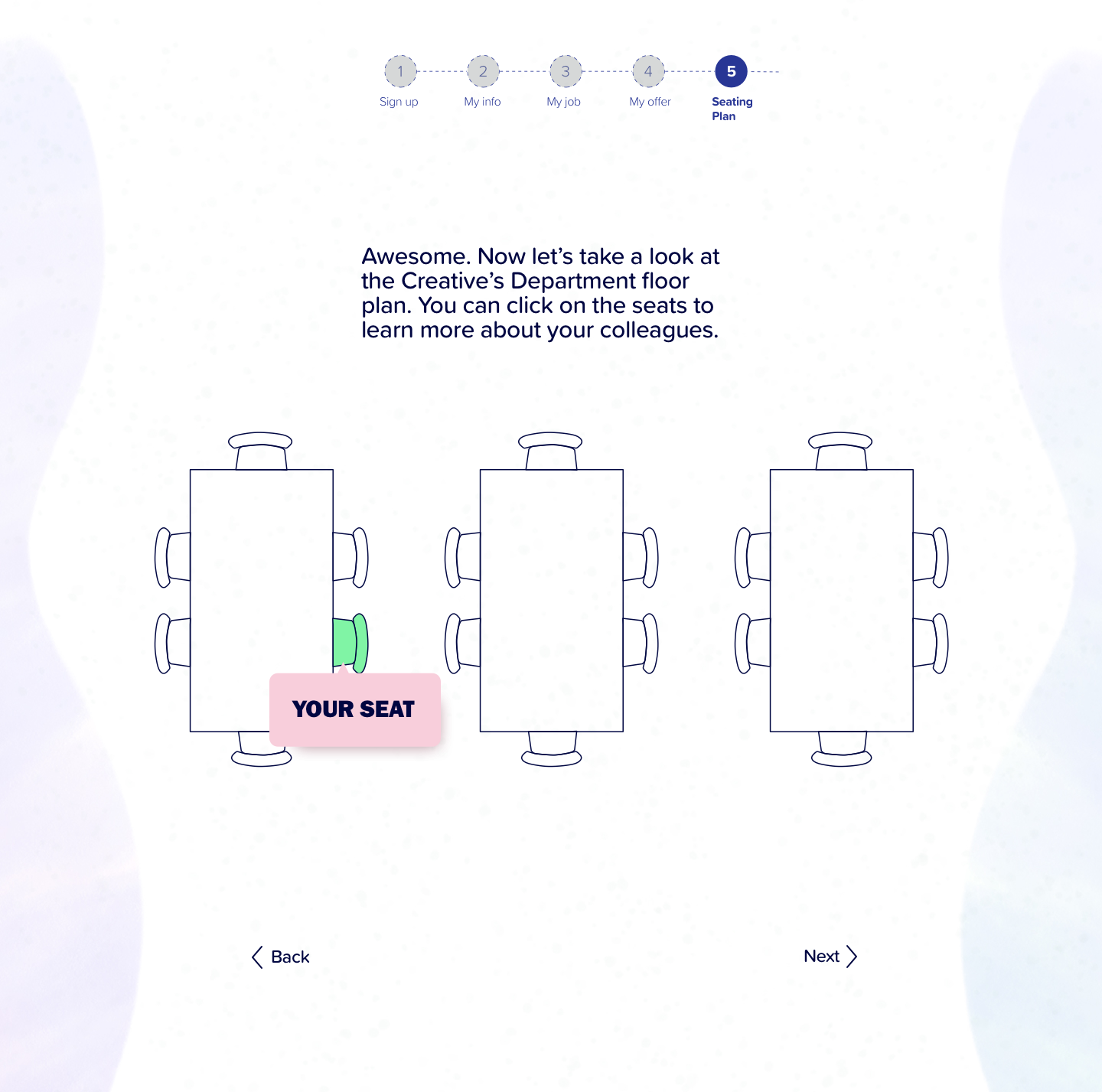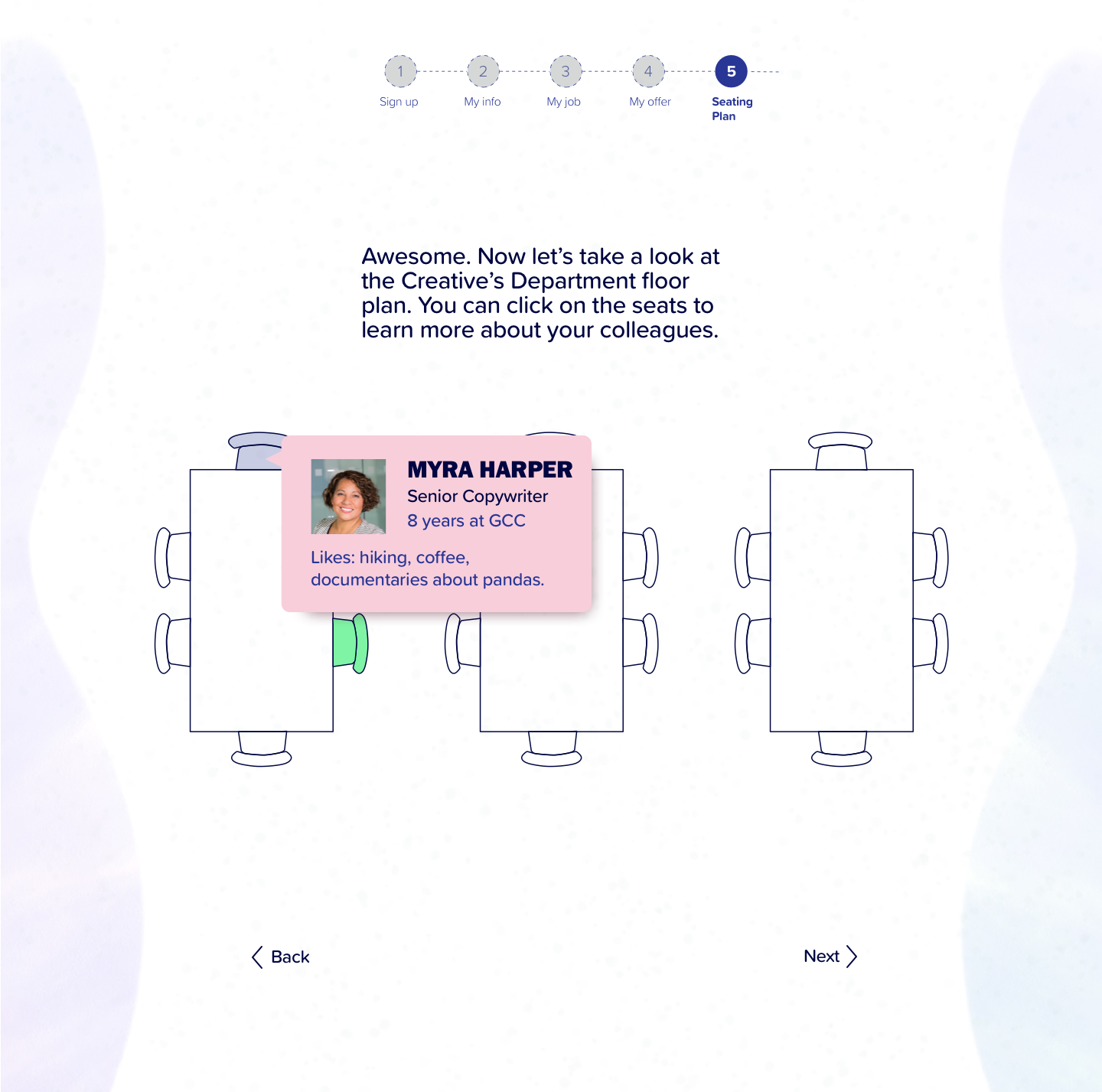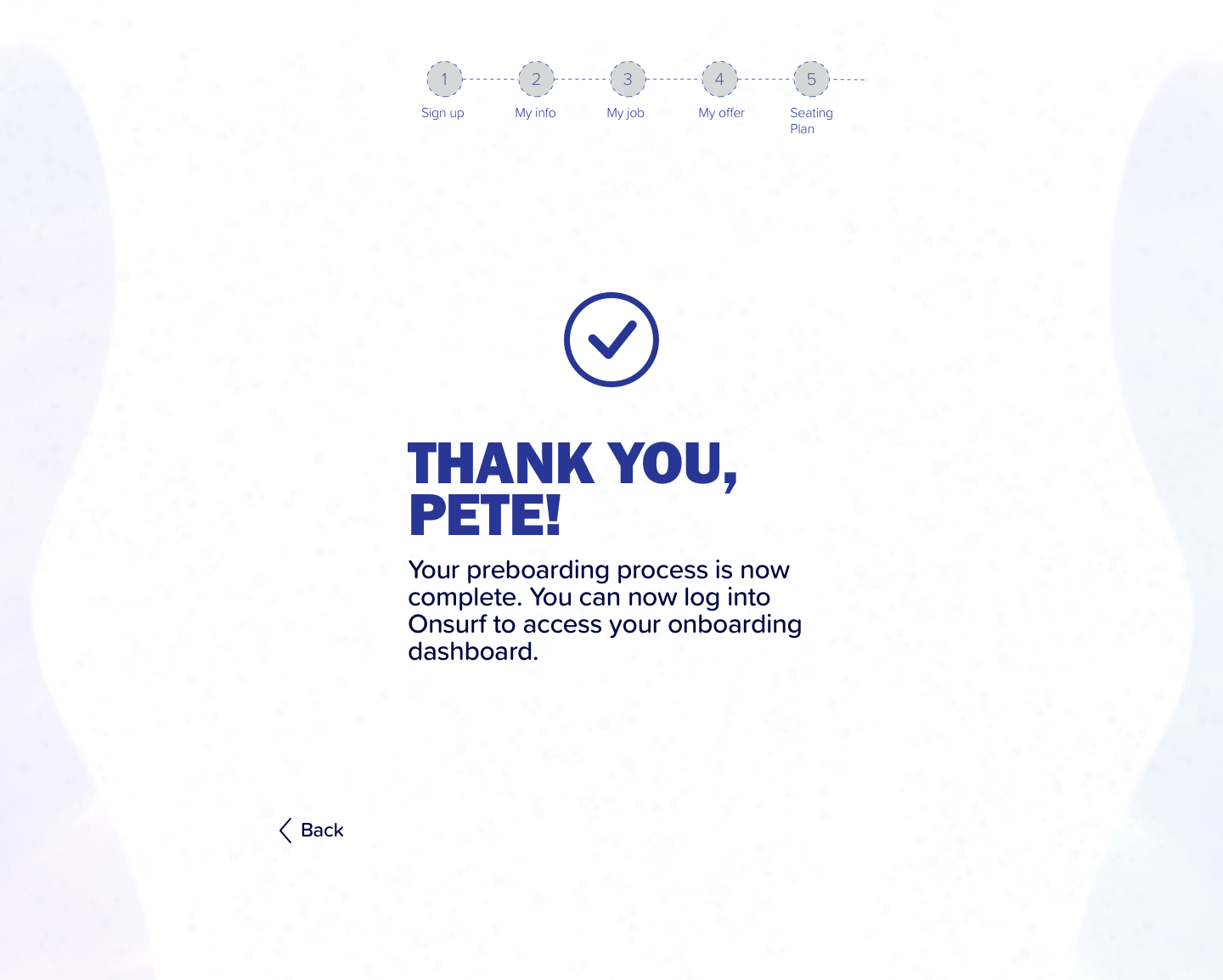overview.
This project outlines the process to create a software as a service (Saas) desktop web app for on boarding processes. In order to do so, I carried out market research and interviewed employees from various companies. I then created an affinity map with the key results of the interviews. I then prioritized the features of the app by using the MoSCoW method. I then worked on the low fidelity, mid fildelity and high fidelity prototypes.
tools
Benchmark Analysis
Affinity Mapping
Feature Prioritization
Customer Journey
User Flows
Crazy 8s
Wireframes
Prototypes
Usability Test
Sketch
Invision
role.
I was the project manager, researcher and designer of this web app.
the project.
1. Desk Research
I started by doing some online research on onboarding practices to contextualize the project. The company TalentLyft divides employee onboarding tools into five. More information on that can be found in this link. Other interesting insights were gathered from the 2015 report Today’s State of Work: The Productivity Drain by ServiceNow. Among them were the following:
- 70% of corporate managers find onboarding tedious.
- 49% find it frustrating. Diagram in the service now document.
- 40% of managers say it requires from 5 to 9 interactions to get an employee set up for his first day
- 49% find it frustrating. Diagram in the service now document.
- 40% of managers say it requires from 5 to 9 interactions to get an employee set up for his first day
2. Benchmark Analysis
3. Interviews & Insights
I carried out 11 interviews to people from 6 different companies. Among them were employees from which were Google, Amgen, Alain Afflelou, grupolar and Dreams Engine among others.
This process allowed me to gather insights from people with different job descriptions such as HR Managers, Agency Director and Senior Scientists and Developers. Among others, employees were asked about their difficulties on their first day at work and their feelings about how their onboarding went. Managers were asked about specific tools, goals and limitations of the current process.
4. Affinity Mapping
I sorted the main insights into the following categories: employee painpoints, content in online platform and courses, other activities, tools, managers do, managers' painpoints, HR does, HR painpoints.
5. Problem Statements
6. Insights & Solutions
7. User Personas
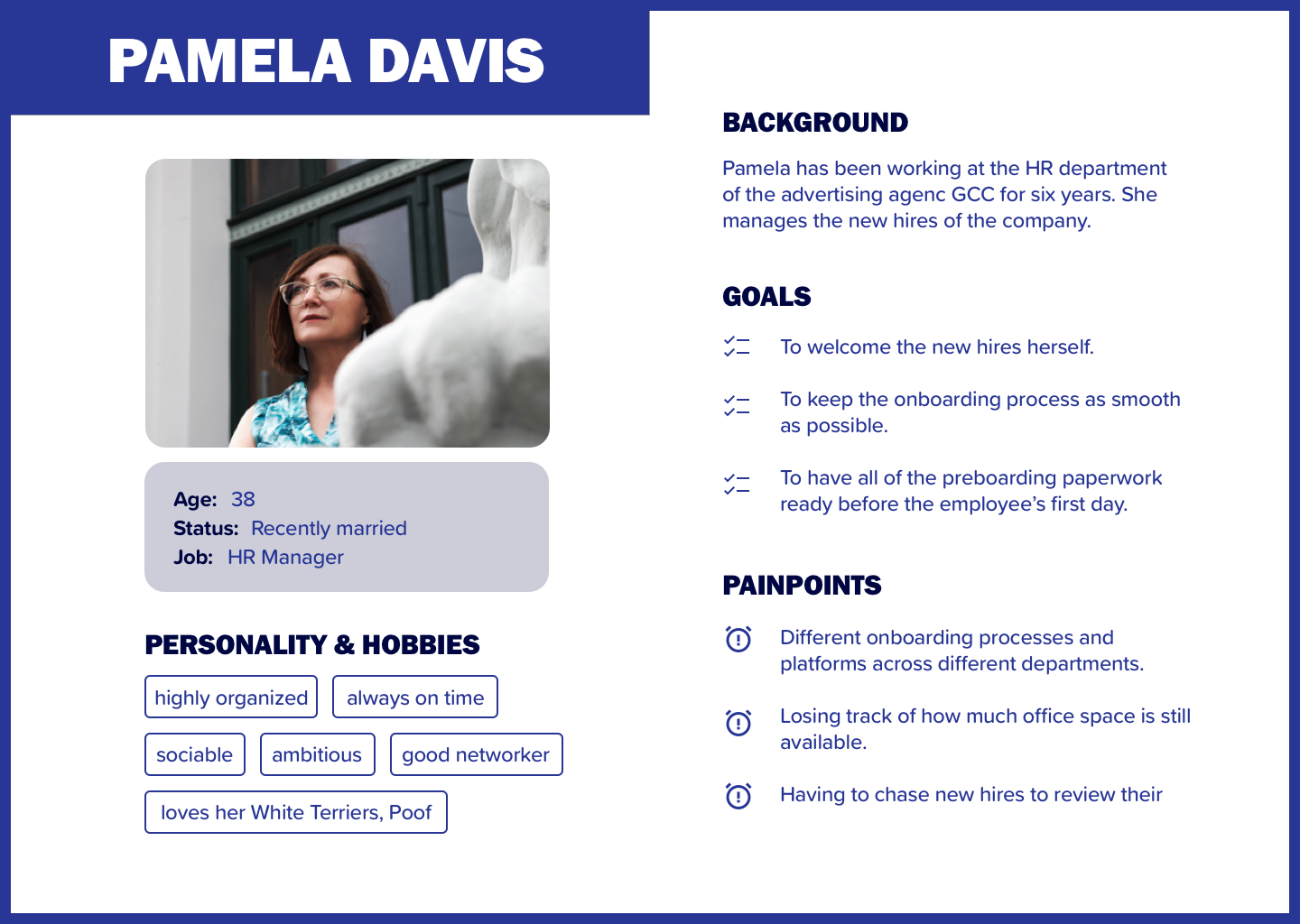
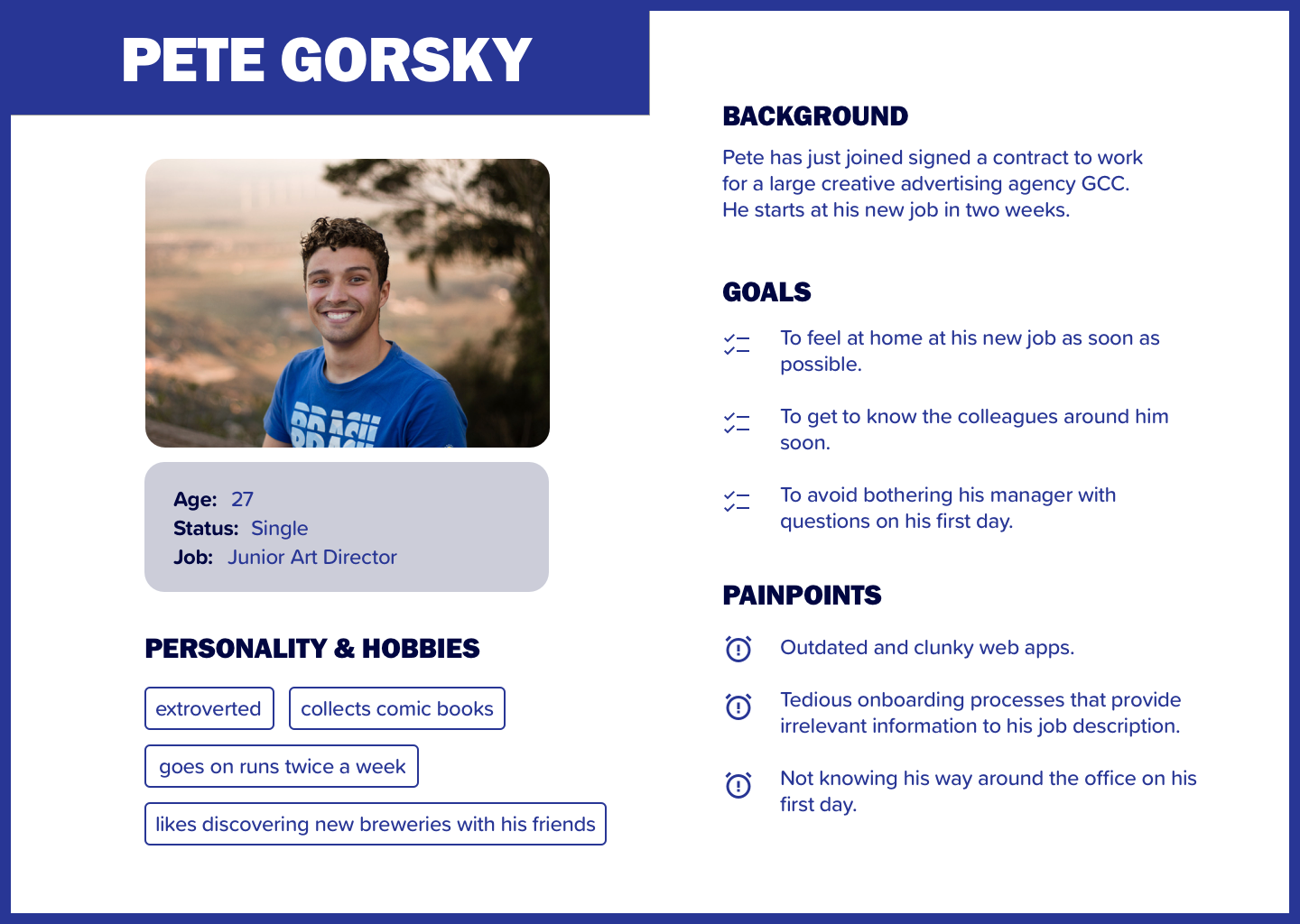
8. First User Flow
Once I defined the user personas, I worked on the an initial user flow for the HR Manager. However, as I realized later there were some flow errors that would need later fixing. This is a flow that focuses on one specific part of the preboarding experience and not on the complete journey.
9. First Low-Fidelity Prototype and Improvements
10. Feature Prioritization
After pointing out the main issues with my flow, I decided to place the main insights gathered from my affinity map in a feature prioritization matrix. I also used the MoSCoW method to determine which features would allow for the most coherent flow. This step was key in building a thorough customer journey of the preboarding process.
11. Customer Journey
10. Second Low-Fidelity Prototype.
12. Mid Fidelity Prototype
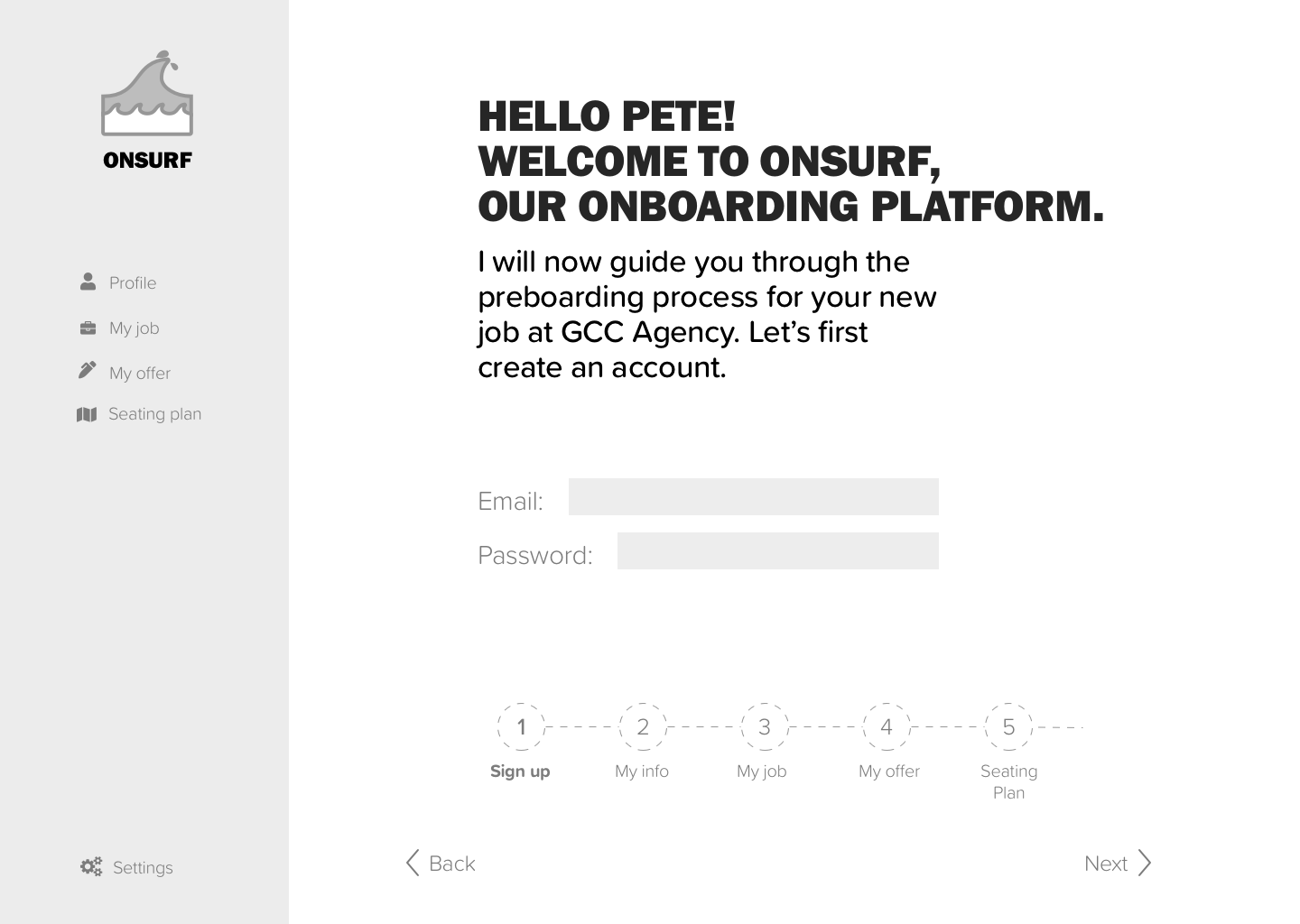
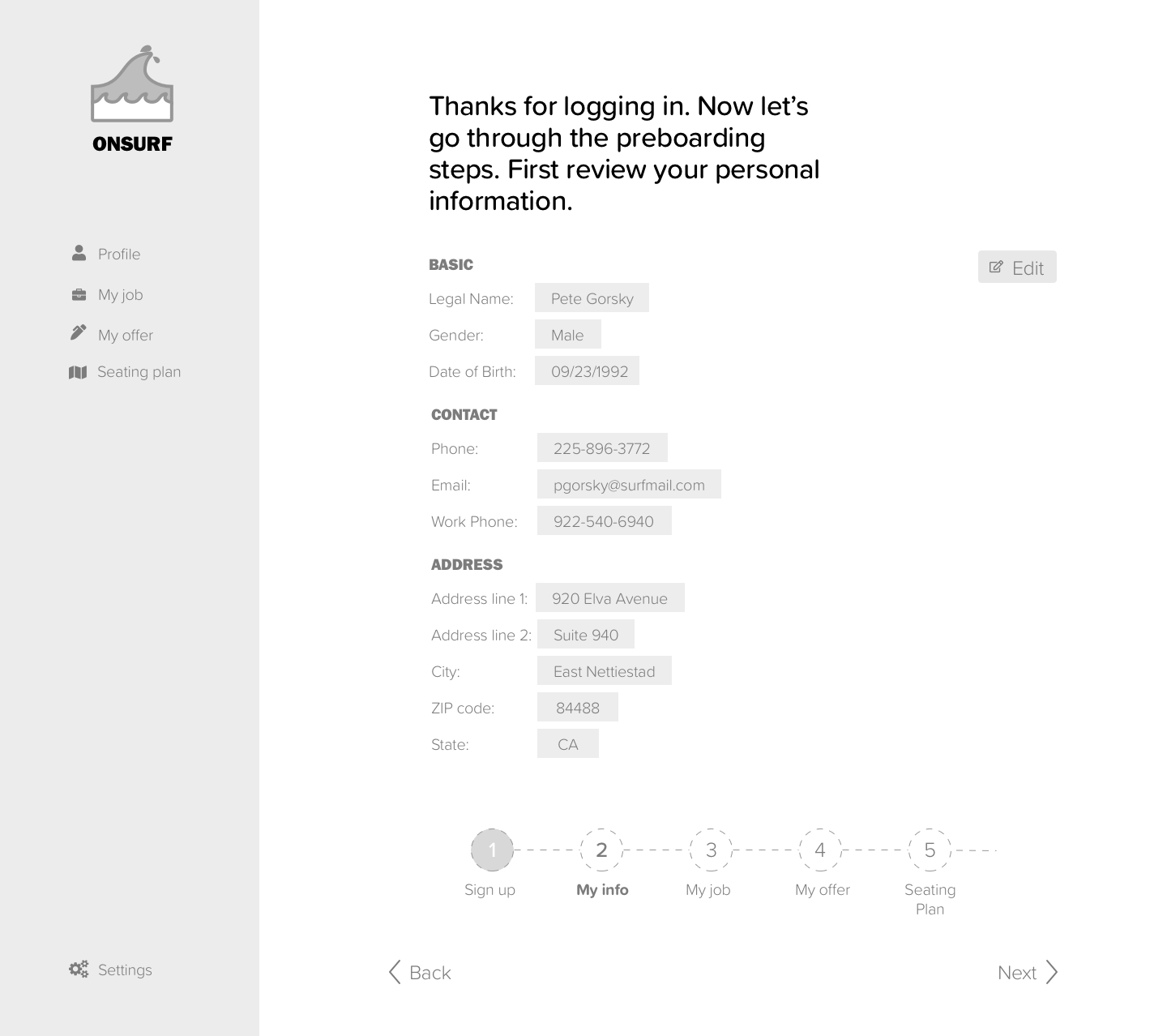
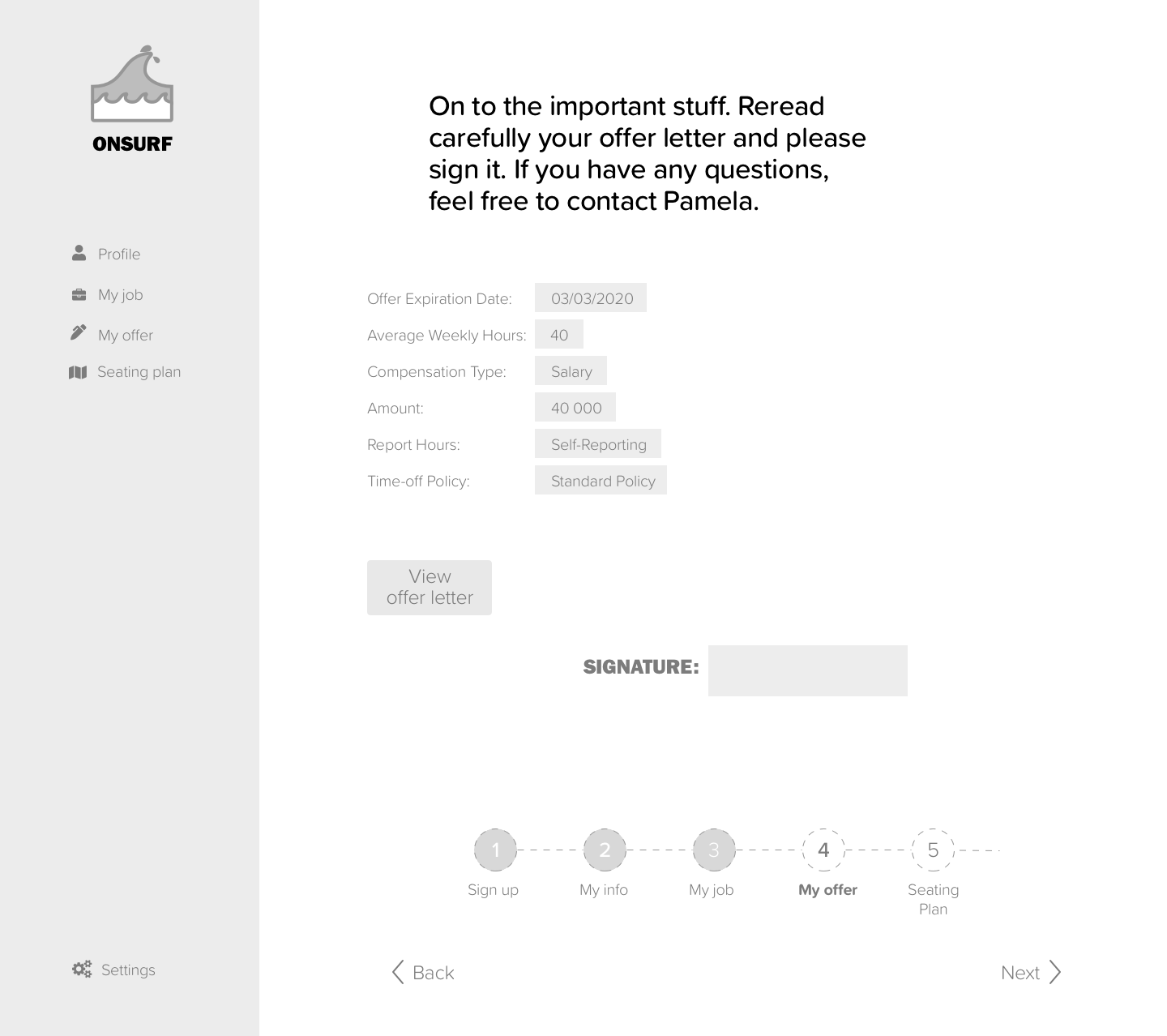
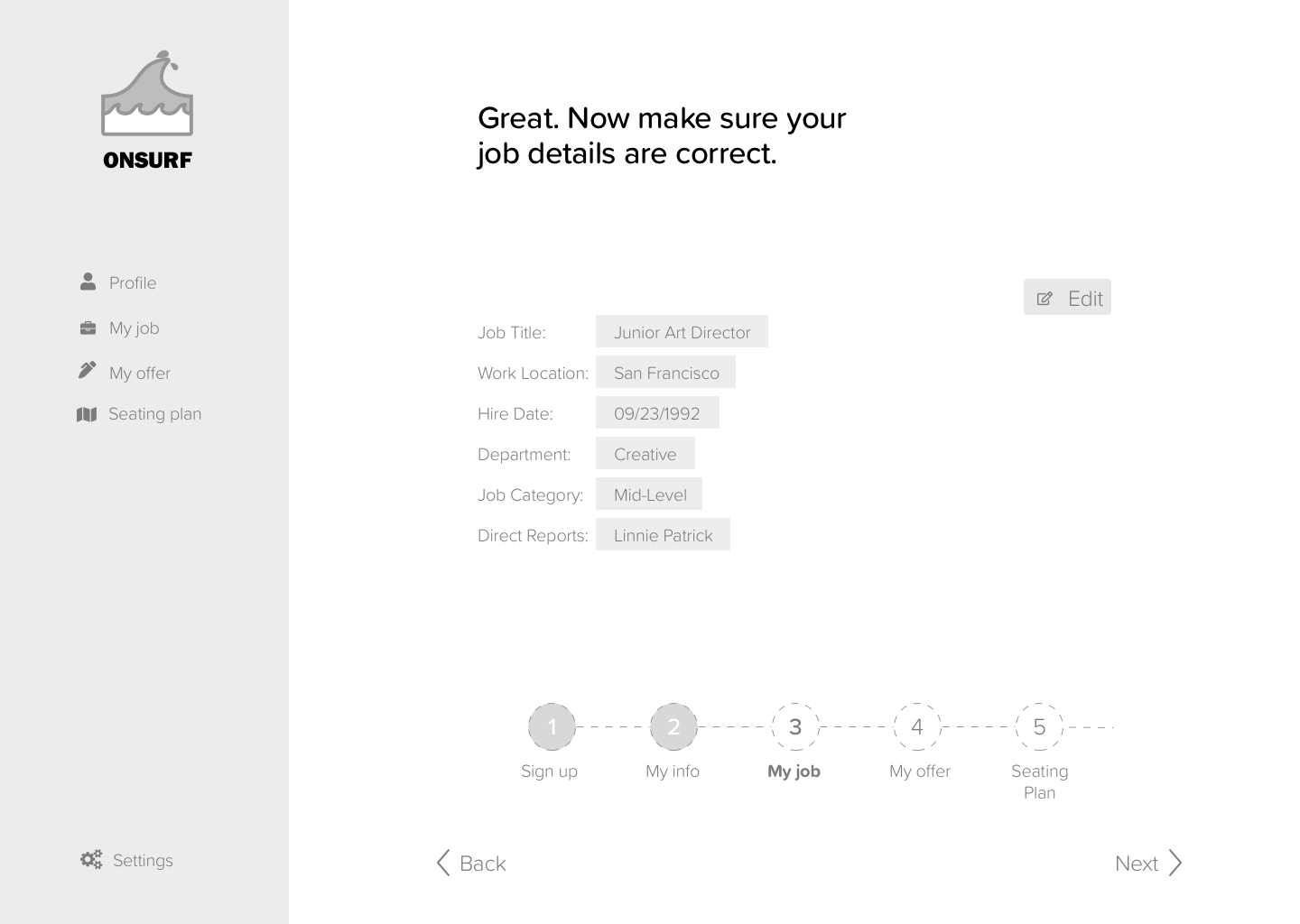
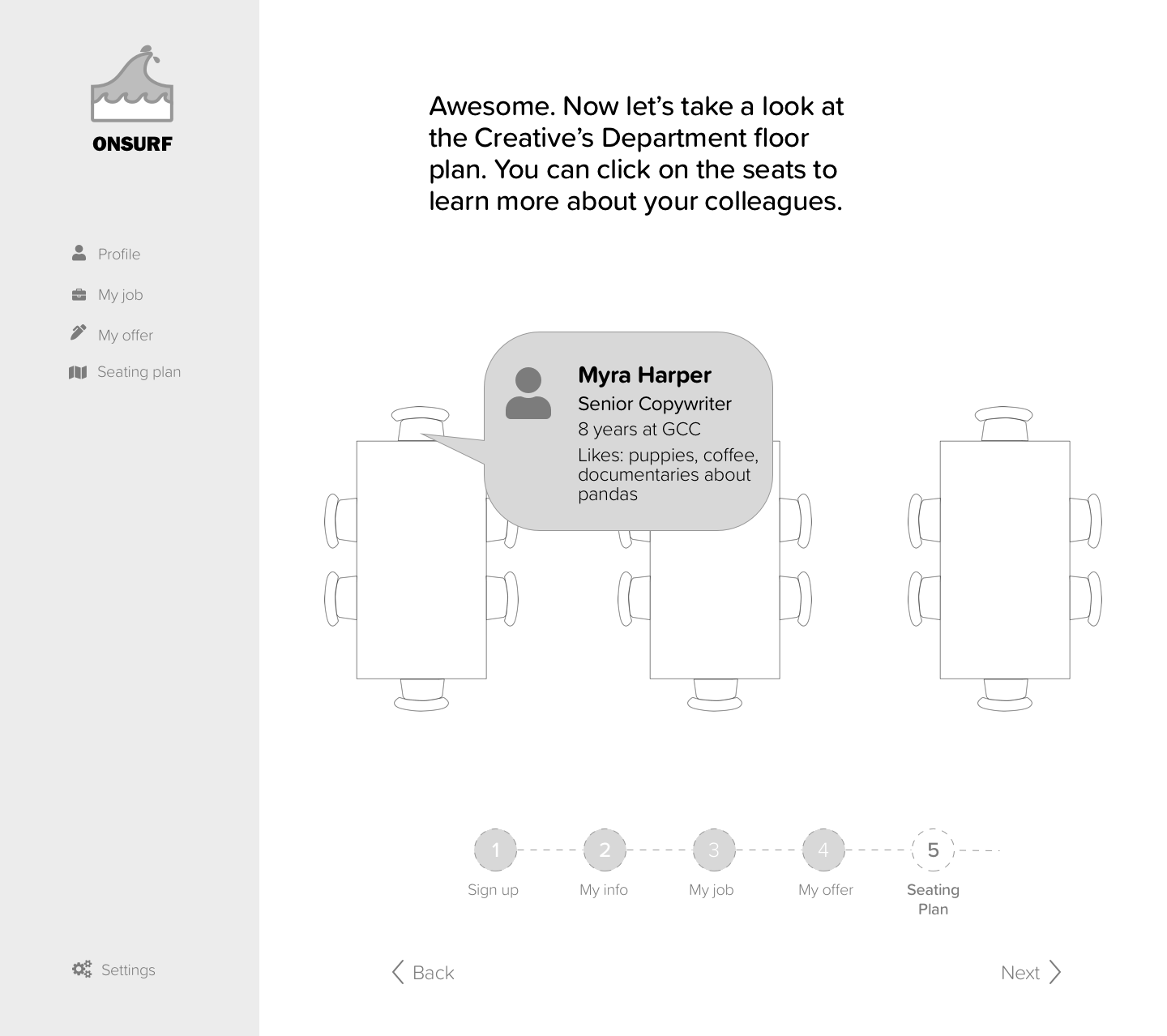

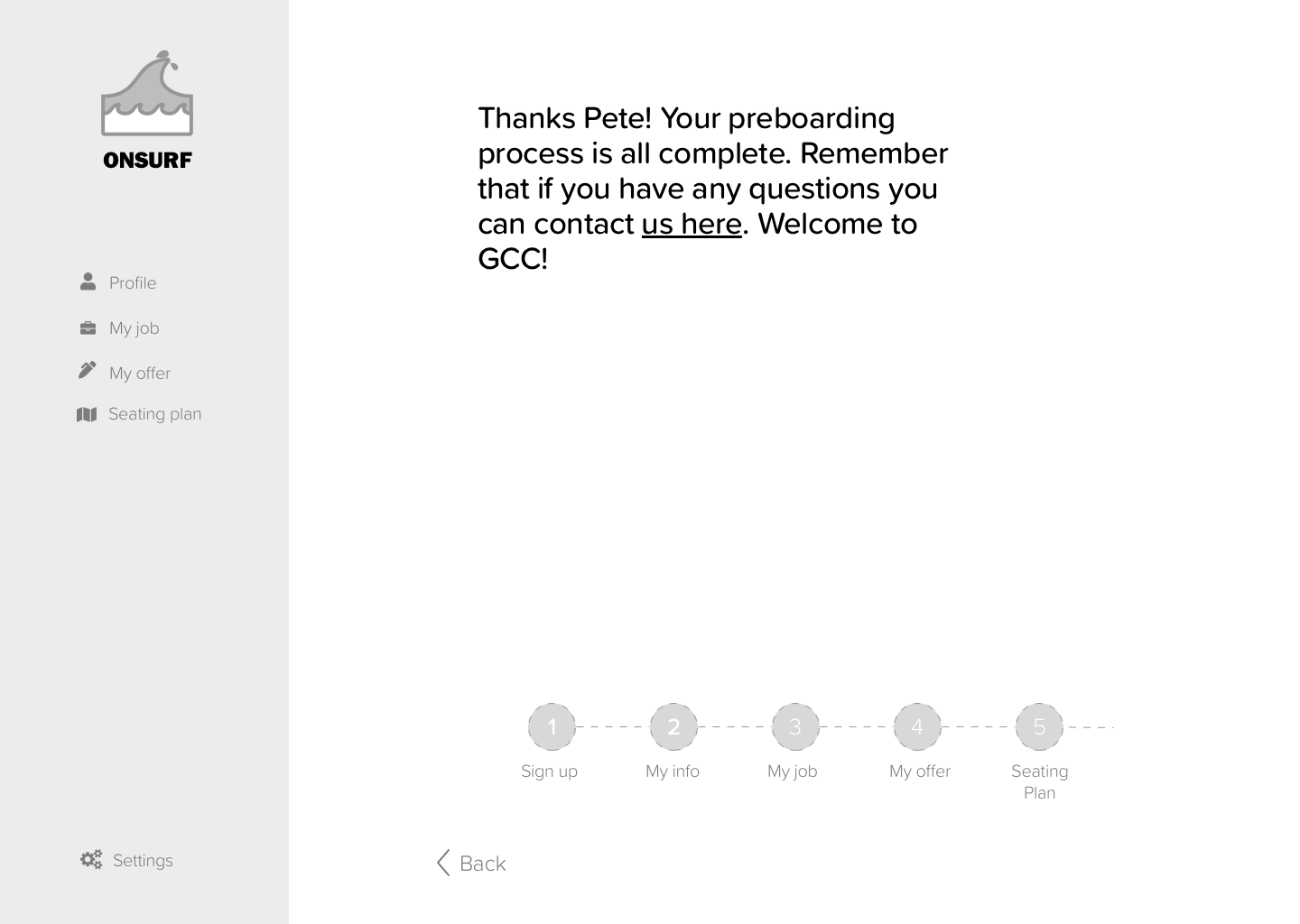
13. Style Tile
14. High fidelity Prototype
You can view the full interactive prototype by following this link.
